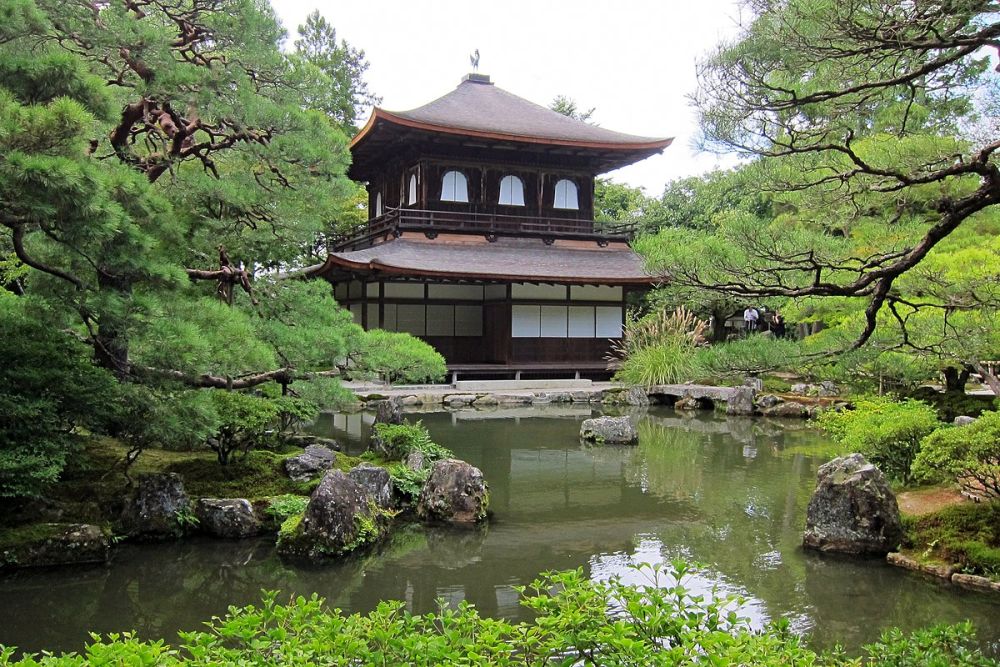

Ginkakuji, also known as the Silver Pavilion, is a Zen temple located in Kyoto, Japan. Its famed history begins in 1482, when Ashikaga Yoshimasa, the 8th shogun of the Muromachi period of Japan, built it as a retirement villa. Subsequently, it was converted into a Zen temple by his will after his death. It should be noted that, despite its name, the Silver Pavilion was never covered in silver. Instead, the name arose as a nickname to contrast it with Kinkakuji (Golden Pavilion), another Kyoto landmark.
Tourism at Ginkakuji Temple has blossomed over the centuries. During the Edo period, it was mainly a site of pilgrimage for the Japanese, but as travel barriers diminished and Japan opened its doors to international travelers, Ginkakuji became an essential destination for tourists worldwide. Recognized for its architectural beauty and historical significance, Ginkakuji was inscribed on the UNESCO World Heritage List in 1994, as part of the Historic Monuments of Ancient Kyoto. This designation significantly boosted its international profile and tourism numbers.
Today, Ginkakuji attracts millions of visitors annually who come to admire its serene gardens and the iconic Kannon-den (Silver Pavilion), which is an excellent example of Higashiyama culture of the Muromachi period. One of the latest trends in tourism at Ginkakuji is the increased interest in cultural and experiential travel. Tourists are delving more into the cultural heritage of the temple through guided tours that explain Zen philosophy and the history of the shogunate.
Social media has also influenced tourism trends, with the temple's stunning sand garden, known as the "Sea of Silver Sand," becoming a particularly popular photo spot for visitors sharing their experiences online. Additionally, there is a rise in sustainable tourism, with visitors showing more respect for cultural sites and local customs, and engaging in environmentally-friendly practices during their visits to Gishiki.
A trip to Ginkakuji generally includes a stroll through its meticulously maintained gardens, a view of the Silver Pavilion itself, and often a tranquil moment by the pond reflecting the seasons. The temple's grounds provide a year-round display of Japan's famed natural beauty, from cherry blossoms in spring to fiery maple leaves in autumn.
Visitors can also enjoy the Togudo, known as the oldest Shoin style building in Japan, which further showcases the temple's historical depth. The temple path, known as the "Philosopher's Path", is particularly popular for walks, extending into the surrounding cultural district of Kyoto.
Embodying Japan's profound historical significance and tranquil elegance, Ginkakuji remains a testament to the country's enduring cultural appeal. The ongoing interest in cultural enrichment, paired with the latest trends towards immersive and conscious tourism, ensures that Ginkakuji will continue to be a revered destination for both Japanese residents and international travelers for years to come.